For all the hand-wringing over the potential for labor disturbances across multiple modes, the year came and went, with the notable exception of the dispute between the United Auto Workers and Mack Trucks, mostly bereft of the images of picket lines.
UPS Inc. (NYSE: UPS) and the Teamsters union reached a five-year contract without 340,000 UPS Teamsters hitting the bricks. U.S. members of the International Longshore and Warehouse Union remained on the job through contract talks that would culminate in a six-year agreement, though Canadian ILWU members did walk off the job twice in July for brief periods.
Workers at less-than-truckload carriers ABF Freight System Inc., a unit of ArcBest Corp., and TForce Freight, the U.S. arm of Canadian transport and logistics company TFI International Inc., ratified their respective five-year contracts with little fanfare. The rail industry, coming off a turbulent 2022 when labor-management disputes came close to shutting down the national system, spent 2023 in relative quiet.
But there is a price to be paid for labor peace. Contracts ratified during 2023 came with employee wage and benefit increases. The gains will either be absorbed by employers, passed on to customers, their customers, consumers or a combination of all of the above. The mainstream media-coined phrase of the “summer of strikes” proved to be overrated. Still, the labor disputes in multiple industries, and the settlements that resulted, were sufficiently high profile to compel workers heading into 2024 to wonder if they too can get more than they have bargained for in the past.
One of the biggest stories of the year, the demise of the near-century-old LTL carrier Yellow Corp., did not involve strikes, but the destruction of 30,000 jobs, 22,000 of them Teamster jobs. It marked a sad ending to a 15-year odyssey that saw Yellow’s rank and file sacrifice mightily to keep the company afloat, only to see the company, and their jobs, disappear.
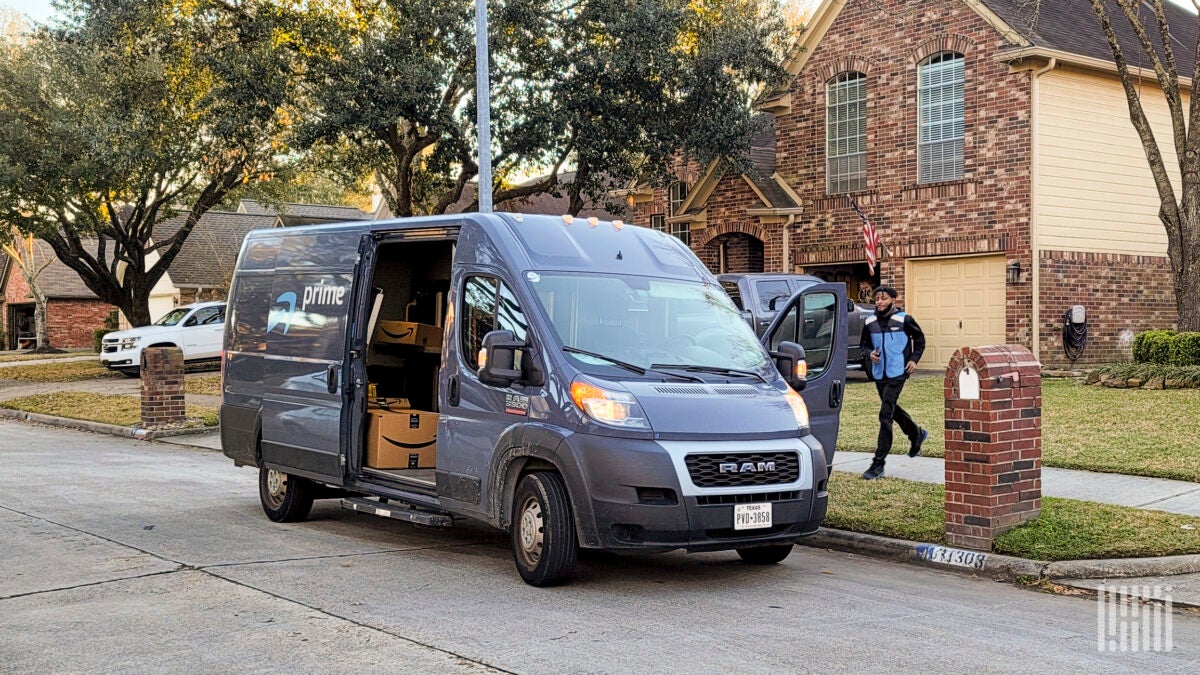
Parcel: Teamsters angling for bigger fish
The Teamsters’ contract with UPS affects more union workers than any compact in North America. Yet it could be just a means to an end.
Teamsters General President Sean O’Brien took a very aggressive posture in contract talks with Big Brown. He did so for three reasons: 1. That’s who he is. 2. He wanted UPS workers to reap the tailwinds of a favorable post-COVID labor environment that they had missed out on having ratified the last contract in 2018. 3. He wanted to send a message to Amazon.com Inc. that it could nail down the same type of deal for its nonunion workers.
On Tuesday, the Teamsters issued a statement accusing Amazon of misclassifying delivery drivers as employees of its Delivery Service Partners (DSP), contractors who work for Amazon, instead of Amazon employees even though the drivers wear Amazon uniforms, drive Amazon-branded vehicles and take direction from the company.
The Teamsters’ efforts will continue to be met with pushback from Amazon. The company refused to negotiate with warehouse workers who have agreed to organize, and it shows no signs of backing off. Regardless, it appears that Amazon will become the Teamsters’ holy grail heading into 2024.
The Teamsters came away with what, by all accounts, was a favorable deal with UPS, though the company maintains that the increases, when spread out over the five-year contract life, were far from enormous. The rank and file won a roughly 10% wage increase in year one and a decent increase — though not as much — in year five. In between, the bumps will be fairly modest. All told, workers will realize compounded annualized gains of 3.3% over the five-year cycle, according to UPS.
The year ends with UPS trying to sort out the status of its volumes in the wake of the contentious Teamster negotiations. In late October, the Atlanta-based company said that about 1.5 million daily parcels had been diverted throughout the year due to customer concerns over a possible strike. That was higher than UPS’ original diversion estimate of 1.1 million parcels. About 600,000 parcels had returned to the network, with roughly half of that coming from chief rival FedEx Corp. (NYSE: FDX), UPS executives said at the time.
The company did not provide an update as of the third week of December.
— Mark Solomon
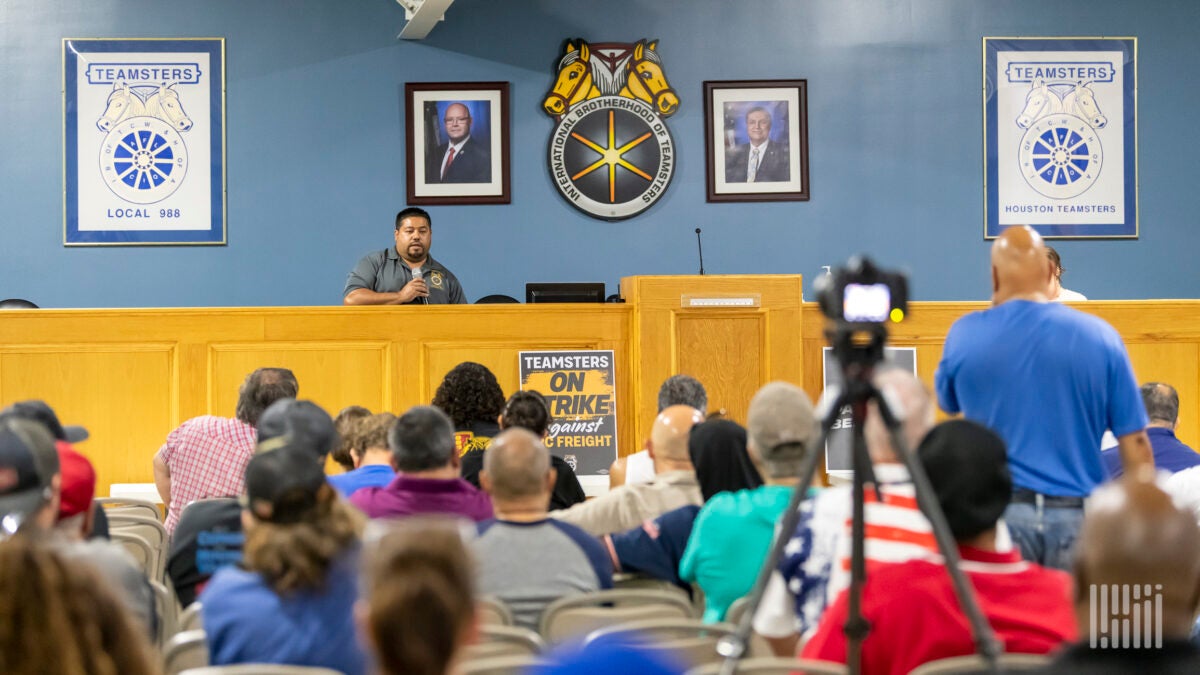
LTL: Yellow dominated the labor space
Perhaps the biggest story in the transportation and logistics space this year was the closure of Yellow Corp. While the finger-pointing over which party is to blame lingers in some circles, the defunct carrier’s estate continues to be sold off in hopes of fully repaying creditors.
The last straw was a failure to implement a change of operations with its union workforce. Yellow was hopeful it could consolidate operations at regional carriers New Penn and Holland with its national YRC Freight network as it had done at its Reddaway facilities months prior. However, labor balked at the planned changes to work rules, which would require drivers to also work freight on the docks and at locations other than their home terminal.
A ray of sunshine came in the spring when it appeared the two parties would pull forward negotiations on their collective bargaining agreement and hash out a proposed change of operations alongside setting rates for wages and benefits. Negotiations quickly fizzled and the heated rhetoric resumed in short order.
Running out of cash and options, Yellow asked plan administrators to defer health and pension contributions and called on the White House to intervene in negotiations. The company even filed suit against the Teamsters for breach of contract, claiming the organization was negotiating in bad faith and intentionally delaying implementation of the changes even though it knew the carrier would run out of money.
The threat of a worker strike over missed health care payments was enough to force Yellow’s customers to seek other capacity options. Court filings showed Yellow had 40,000 shipments in its network the day the strike was announced. Shipments fell by 10,000 per day to “near zero” by the end of that week. On July 30 it ceased operations. It filed for bankruptcy protection a week later.
Some have speculated that O’Brien sacrificed Yellow to show management at UPS (NYSE: UPS), where it was negotiating a labor deal on behalf of nearly 340,000 workers, that it meant business.
The Teamsters claimed throughout the negotiations that its members had given billions in wages, benefits and pension concessions in the past. It blamed Yellow for years of mismanagement and said it wasn’t going to bail it out again.
“It is not left for the Teamsters to save this company; we have given enough,” O’Brien said in June. “What happens next is out of our control.”
In the end, 30,000 employees were on the street, 22,000 of them Teamsters.
There were some LTL labor negotiations conducted in 2023 that didn’t include personal attacks and name-calling. While O’Brien vowed to “fight like hell” heading into talks with TForce Freight (NYSE: TFII) and ABF Freight (NASDAQ: ARCB), no fireworks were publicly visible although Teamsters at both companies voted “yes” to strike if certain demands weren’t met.
In June, ABF and the Teamsters reached a five-year deal that raised wages by $6.50 per hour and benefits contributions by $4.46 per hour over the life of the contract. Employees also received two additional paid sick days and one additional paid holiday, among other provisions. The contract covers approximately 8,600 workers.
In July, TForce reached a deal with the Teamsters covering 7,800 drivers and clerical workers. The package included wage increases totaling $4.50 per hour over the contract period, mileage increases and higher employer contributions to health, welfare and pension plans. Additional paid time off, work rule protections keeping road drivers from working freight on the docks and a requirement for new trucks to have air conditioning, were among other items agreed to.
— Todd Maiden
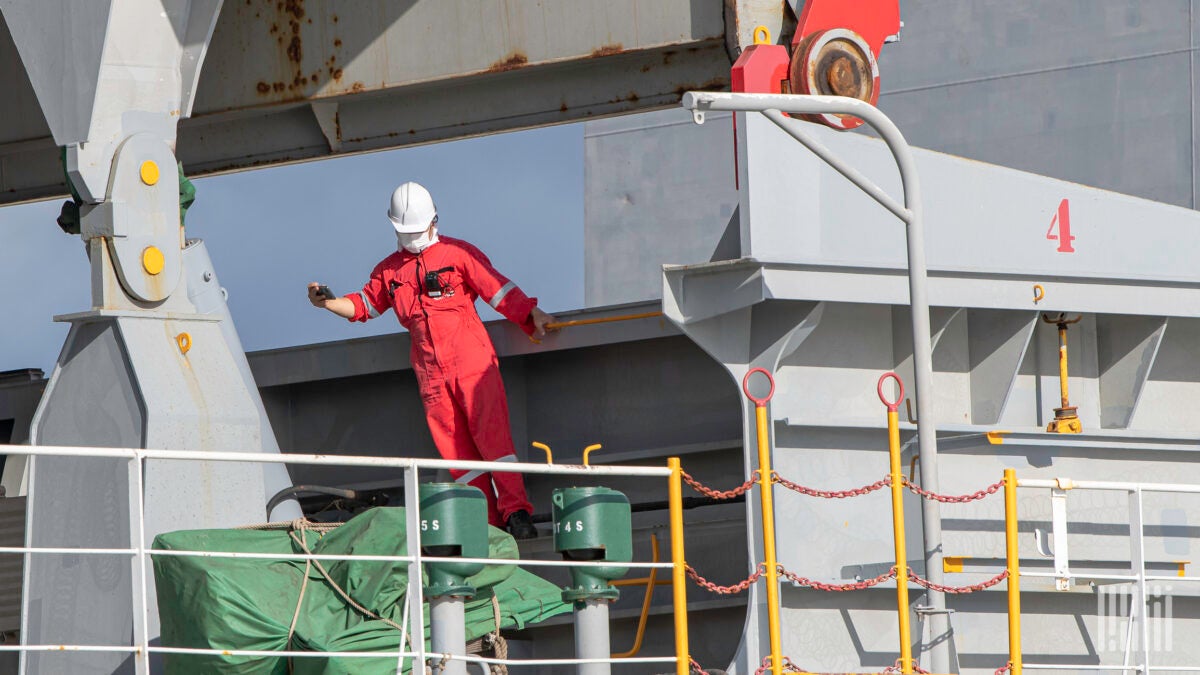
Maritime: Different union, same contract concerns
This year began with fears that one of America’s largest dockworker unions would disrupt imports. It ended with the same fears — about a different union.
The ILWU represents dockworkers at the Pacific ports of the U.S. and Canada. The contract covering U.S. West Coast port labor expired on July 1, 2022. Talks dragged on into this year, with salary increases and COVID bonuses the predictable sticking points.
Work slowdowns ensued, but importers were prepared: A portion of Asia-U.S. volumes was redirected to East and Gulf Coast ports to hedge the ILWU risk.
A new contract agreement was finally reached on June 14. ILWU workers got their COVID bonus and a 32% pay raise over a six-year period.
Shipping’s labor saga appeared, briefly, to be over. Then three new plotlines emerged.
The ILWU’s American members reached a deal, but not its Canadian members. ILWU Canada went on strike on July 1, went back to work on July 13, said it was going back on strike on July 18, called the strike off the next day, then finally agreed to a deal on July 30.
Meanwhile, the corporate division of the ILWU was contending with a potentially crippling legal liability.
A jury in Oregon decided in November 2019 that the ILWU owed terminal operator ICTSI $93.6 million in damages for unlawful labor practices starting in 2013 at the ICTSI terminal in Portland, Oregon.
A judge lowered the award to $19 million in March 2020, but only if both sides agreed. ICTSI did not agree, and a second damages trial was put in motion, with ICTSI seeking $48 million to $142 million this time around.
The new damages trial was scheduled for February 2024, but on Sept. 30, the ILWU short-circuited the process by filing for Chapter 11 bankruptcy protection in California.
ICTSI is vigorously contesting the move, claiming the ILWU is forum shopping. A hearing on the final confirmation of the Chapter 11 plan — which calls for the ILWU to pay ICTSI $6.1 million — is scheduled for late March 2024.
Yet another labor plotline features the International Longshoremen’s Association, which represents dockworkers at East and Gulf Coast ports. Its current six-year contract with employers expires on Sept. 30, 2024 — just over a month before the next presidential election.
In its next contract, the ILA is demanding “a landmark compensation package,” prohibitions against terminal automation and tightened language ensuring all work at new terminals goes to ILA members.
ILWU President Harold Daggett warned on Nov. 4: “Members should prepare for the possibility of a coastwide strike in October 2024.”
Thus, the coastal threats have reversed. In early 2023, shippers were shifting cargo away from the risk of West Coast labor disruptions and toward the safety of East and Gulf Coast ports. As this year comes to a close, they are shifting cargo back to the West Coast and away from a potential disruption next year at East and Gulf Coast ports.
— Greg Miller
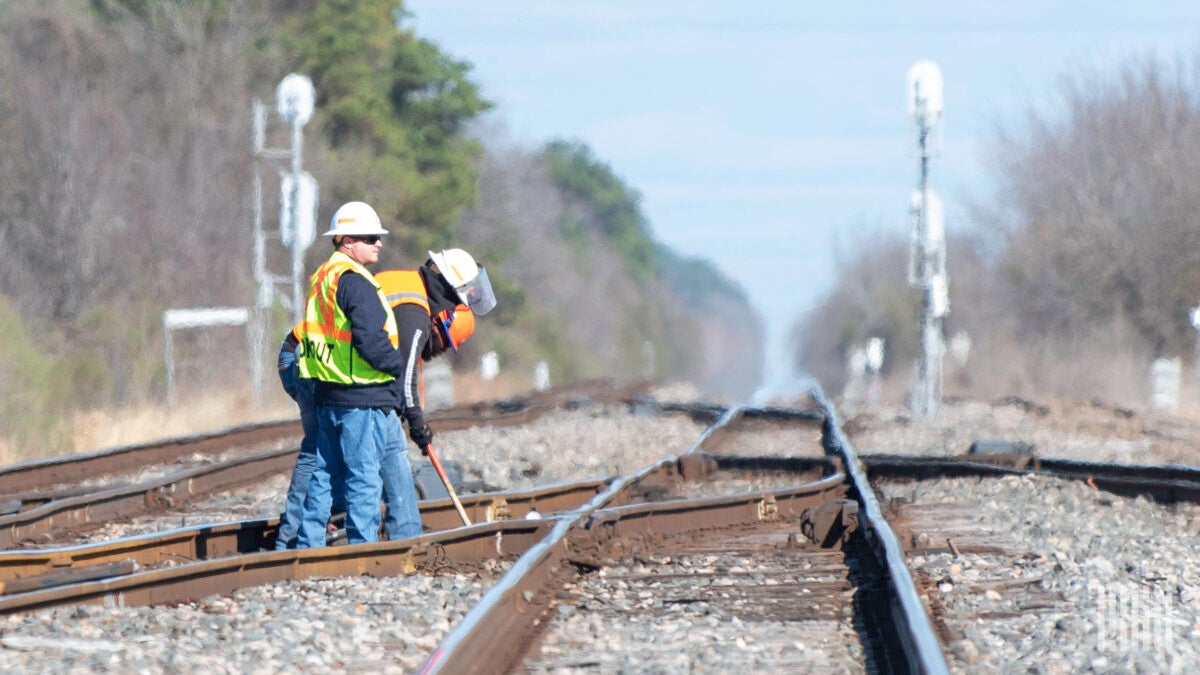
Rail: The calm after the storm
Compared with the contentious environment in 2022 and an inability to get a labor agreement passed without congressional intervention, the U.S. operations of the Class I railroads and their craft unions experienced a relatively more subdued 2023. Despite some disagreements over furloughs and crew consists, individual unions reached sick leave agreements with the various Class I railroads throughout the year; some railroads, such as Union Pacific (NYSE: UNP) and Norfolk Southern (NYSE: NSC), even reached agreements on work schedules. Both the sick leave and work scheduling agreements were not part of the labor agreements ratified by the railroads and unions in December 2022.
However, what happens in 2024 in rail labor-railroad relations could serve as an indicator for how the next bargaining round will go. The next bargaining round will officially kick off in January 2025 with preliminary negotiations, but both sides could start gearing up in the second half of 2024.
“The railroads are committed to working with rail labor, delivering on their promises and maintaining railroading’s place among the best jobs in our economy,” Brendan Branon, chairman of the National Railway Labor Conference and the National Carriers’ Conference Committee (NCCC), told FreightWaves in an emailed statement. NCCC represents the freight railroads at the bargaining table.
Branon noted the railroads and the unions in 2023 reached local agreements expanding paid sick leave to more than 90% of all unionized rail employees at NCCC rail carriers.
“We hope to extend that positive momentum throughout 2024 and into the start of the next bargaining round. The most recent national agreements provide that opening proposals can be served starting in November 2024 ahead of the January 1, 2025 amendable date,” Branon said.
— Joanna Marsh
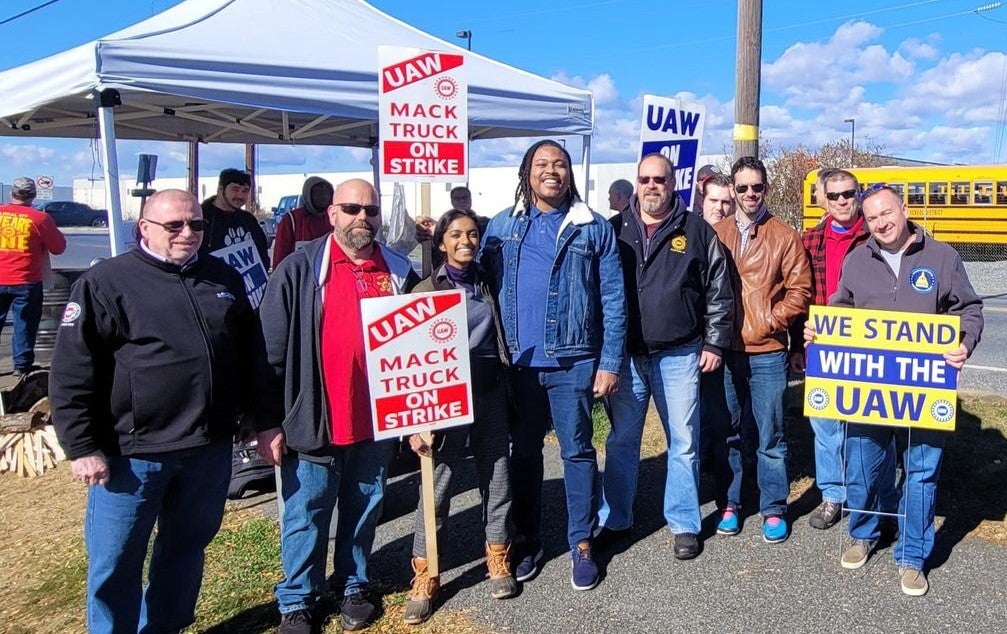
Trucks: Mack workers walk again
For the second time in four years, Mack Truck workers went on strike against the Volvo Group subsidiary. The Oct. 9 walkout caught the company by surprise because it had reached a tentative agreement Oct. 1 endorsed by both local and international UAW leaders.
Outside influences appeared to prompt the 39-day walkout. An ongoing UAW strike of the Detroit Three automakers caught the attention of Mack workers, who saw the more substantial offers being made by the automakers to the union.
And the World Socialist Website (WSWS), which had backed Mack employee Will Lehman in an unsuccessful bid for president of the international UAW earlier in the year, agitated workers to vote down the tentative agreement, which they did by 73%.
The two sides resumed talks, but Mack made it clear it had nothing more to offer, other than settling some unresolved local agreements. The strike involved 3,900 workers at facilities in Pennsylvania, Florida and Maryland, where a Hagerstown engine plant provides powertrains for Mack and Volvo Truck North America operations.
After the staredown, union leaders took a second vote on the agreement that called for 19% pay hikes across five years, a $3,500 signing bonus and no out-of-pocket increases in benefit costs plus other gains. The company called the Oct. 1 tentative pact its “last, best and final” offer.
Mack threatened to declare an impasse, hire temporary workers and make existing workers fight for their jobs. The second vote Nov. 15 passed with 93% in favor.
The WSWS railed against the “sellout contract” that Mack pushed for ratification as well as agreements with better terms eventually reached by Detroit’s Big Three.
— Alan Adler
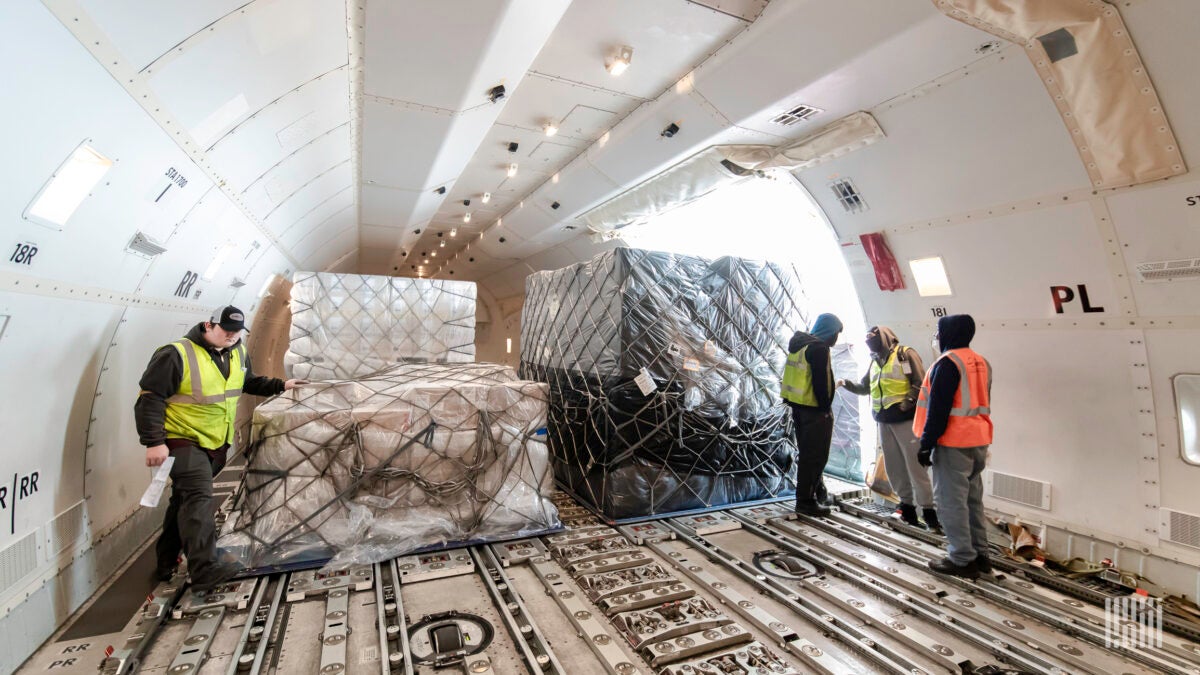
Aviation: A busy year
It was a busy year for labor contracts in the airline and air cargo sectors. The threat of disruption loomed over some carriers as unions flexed their muscle to influence negotiations and new deals significantly raised operating costs.
Pilot unions were able to take advantage of favorable economic conditions — a tight labor market, high inflation, crew shortages at mainline carriers as they tried to rebuild after pandemic-driven layoffs and a training backlog for new hires — to get better pay and work schedules.
A number of major passenger airlines reached collective bargaining agreements with cockpit crews. Delta Air Lines pilots finalized a contract that includes a 34% raise over four years. In September, pilots at United Airlines approved a new contract that raised pay up to 40%. American Airlines pilots also received a big raise. And Hawaiian Airlines pilots, including those hired to fly the company’s first freighters for Amazon, reached a deal that raised pay up to 33%.
Southwest Airlines pilots struck a tentative deal this week after earlier giving union leaders leeway to call a strike. Strikes are rare in aviation, in part because of federal law that severely restricts the ability of unions or management to shut down operations for leverage.
Miami-based cargo operator Amerijet agreed last summer to raise pilot pay at least 45% in a three-year deal with the union. The pay hike came against the backdrop of sharply lower revenues because of weak market conditions, with the company laying off some back-office personnel, offshoring accounting functions and parking some aircraft to make ends meet.
Last month, pilots at cargo airline Air Transport International laid the groundwork for union leaders to call a strike when legally allowed. The company is one of the main transportation providers for Amazon Air and DHL Express in the U.S.
Pilots at Western Global Airlines unionized in 2021 and were seeking their first contract when the carrier filed for bankruptcy protection in August. The company exited the bankruptcy process earlier this month after disposing the bulk of its liabilities.
In July, pilots at FedEx Express voted to reject a proposed deal between management and union negotiators. The deal would have raised pay by 30% over five years. Pilots had authorized union leadership to initiate a strike vote before union negotiators reached agreement May 30 on a new deal.
Pilots who voted against the FedEx deal complained about weaker job protections, back pay and alternative pension options and said pay increases were below those achieved by pilots at Delta, United and American. FedEx has too many pilots for fewer needed routes and last month urged some to consider jumping to regional carrier PSA Airlines.
Meanwhile, 1,100 ramp workers at DHL Express’ Cincinnati air hub went on strike on Dec. 7, with the impact spreading as Teamster members at other U.S. locations honored the picket line and refused to report for work. An agreement between the two sides was reached 12 days later.
— Eric Kulisch











Freight Zippy
UPS parcel was the big winner for unions this year.
Unfortunately they won the battle but may have lost the war. Now that UPS has to pay for the new contract rates are increasing. While at the same exact time Amazon has started Amazon Shipping, a parcel service utilizing Amazons vast brick & mortar infrastructure and their mammoth fleet. While at the same time Amazon for the first time delivered more packages than UPS.
SOB’s tough talk about organizing Amazon is just that. There is no hope of that happening and Bezos will spend scores of billions of $$$ to defeat the job killing union.
No matter, it will be fun to watch these two beat the daylights out of each other… While Amazon eats UPS’s lunch…